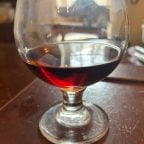(Normal, IL) – DESTIHL® Brewery and K and K Promotions Inc (The Evel Knievel Family) are leaping to new heights together with a spectacular beer project. True Evel American Blonde Ale and Evel Knievel […]
The post DESTIHL Brewery Creates Two Evel Knievel Beers appeared first on The Full Pint - Craft Beer News.
























